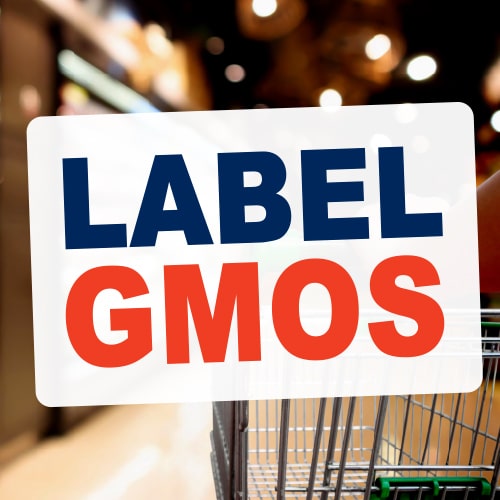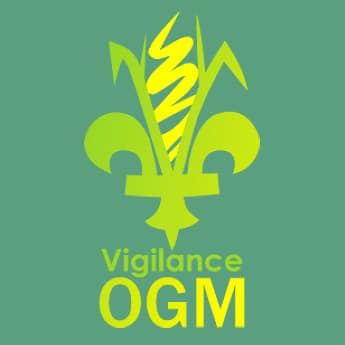Désolé, la version française de cette page ne peut être offerte pour le moment.
Synthetic Biology
Dec 5, 2016: Call for a Global Moratorium on Gene Drives: 163 groups including CBAN call upon governments at the 13th Conference of the Parties to the Convention on Biological Diversity, in accordance with the precautionary principle, to put in place a moratorium on 1) any further technical development and experimental application of gene drives, and 2) environmental release of genetically-engineered gene drives.
Synthetic biology (or *SynBio ») is often called “extreme genetic engineering.” It is an emerging technology that is developing quickly yet remains largely unregulated. With synthetic biology, instead of swapping existing genes from one species to another (as is done through rDNA technology/genetic engineering), scientists can write entirely new genetic codes on a computer, « print » them out and insert them into living organisms. Scientists are even trying to create life from scratch.
SynBio companies have commercialized several products already, including a vanilla substitute grown by synthetically modified yeast, a coconut oil replacement produced by engineered algae, and engineered versions of patchouli and vetiver fragrances.
Artificial DNA is engineered into living things to fundamentally change their character. Nobody knows how to asses synthetic organisms for safety and, until now, governments and companies have refrained from releasing these organisms into the environment because they may threaten the natural world.
From the Open Letter to Ecover: « Synthetic biology is still a new and poorly defined industry; however, since it uses techniques that go beyond recombinant DNA and may pose new risks as well as cause significant disruptions in production and supply chains, there is growing international recognition of the need to bring it under proper oversight on a precautionary basis. …It is our view that, given the significant gaps in knowledge, it is premature to bring synthetic biology and its products into commercial use. There are no developed or agreed protocols for adequate biosafety assessment of SMO’s. Existing risk assessment, traceability and containment measures for genetically modified organisms (GMOs) may be inadequate for novel organisms produced through synthetic biology. There are also significant concerns about the impact of such highly novel organisms on ecosystems should they escape and on the livelihoods of tropical farmers and on biodiversity. «
Background
The below information is from ETC Group:
What is Synthetic Biology?
Synthetic biology is a form of extreme genetic engineering that adds manufactured genetic parts (such as synthetic DNA, synthetic ribosomes or synthetic RNA) to a living cell in order to ‘hijack’ the workings of the cell for industrial uses. Adopting engineering principles, researchers attempt to create modular ‘genetic parts’ or ‘biobricks’ that can be easily snapped together to create more complex genetic ‘programmes.’ Typically, strands of DNA are constructed from scratch out of inert chemicals using a machine called a DNA synthesizer. By specifying the sequence of those chemicals, researchers attempt to ‘programme’ the ‘code’ of the DNA in order to change the behavior of the organism.
How do Synthetic Organisms differ from Transgenic Organisms?
Although we are already familiar with genetically modified organisms (GMOs), where DNA is exchanged between species, synthetic organisms are a different type of life form where DNA is not extracted from a living organism – it is built from scratch. This makes it possible to design DNA sequences that have no known analogue in nature. Some researchers are even inventing entirely new types of DNA composed of base pairs that do not occur in nature. There are currently no protocols for evaluating the safety implications of such entirely new sequences. The established way of moving genes between species (known as transgenics) is a comparatively slow process. Building synthetic DNA is faster and cheaper, and could therefore lead to a proliferation of engineered artificial life forms – all with unpredictable impacts on the environment and biodiversity.
What applications of Synthetic Biology are in use or close to market?
Synthetic biology has received billions of dollars of investment and boasts a growing number of start-up companies partnering with multinational energy, chemical, forestry, pharmaceutical and agribusiness corporations. The largest segment of commercial investment is synthetic microbes and enzymes for agrofuel production or production of chemicals and plastics made from biomass. For example, chemical giant DuPont already uses synthetically altered yeast to ferment corn sugars into a bioplastic sold as Sorona, which is not biodegradable and currently consumes corn from tens of thousands of square kilometers of farmland. Companies such as Amyris Biotechnologies, LS9, Solazyme and Synthetic Genomics, Inc. have developed microbes and algae to ferment sugar or cellulose (woody plant material) into next generation agrofuels, chemicals and plastics. Their hope is that synthetic microbes will be able to break down cellulose more efficiently, and convert carbohydrate sugars to hydrocarbon fuels that are more energy-rich than ethanol. Companies such as Amyris Biotechnologies and Genencor are also constructing microbes that secrete high-value compounds such as the anti-malarial drug artemisinin or synthetic rubber. Meanwhile companies such as Agrivida, Chromatin and Syngenta are applying synthetic biology to reengineer crops such as maize to more easily decompose into agrofuel feedstocks.
How does Synthetic Biology threaten biological diversity?
Near term applications of synthetic biology will impact the natural world in at least two ways:
1) The release of synthetic organisms
Currently, deliberate environmental release of synthetic organisms is proposed for bioremediation, soil enhancement or experimentation; the release of fuel-producing algae is also being proposed. But unintentional release could result from human error where microbes escape from biorefineries, production vats and laboratories. Since the behavior of synthetic organisms in nature is unknown and there are no protocols for assessing their biosafety, we can only guess at the potential invasiveness of these artificial life forms in the wild. In cases where a microbe is intentionally engineered to break down cellulose, enhance photosynthesis or secrete toxic compounds, such an escape could be environmentally disastrous. Photosynthetically-enhanced algae could quickly become invasive, for example. Novel synthetic microbes could also exhibit unexpected pathogenicity with negative consequences for both ecosystems and human health.
2) Increased demand on land, biomass, water and other natural resources
At present most commercial interest in synthetic biology is focused on developing microbes or engineering algae to transform cellulose or other plant sugars to fuels, chemicals and plastics. While first generation agrofuels have already led to massive changes in land use – impacting food and water supplies – so-called “next generation” fuels will transform previously “low-value” forest and agricultural “wastes” such as straw, leaves and branches into valuable feedstocks for chemical and energy companies. This in itself is a problem, as they are not « wastes, » but important components of soil, intrinsic to the recycling of nutrients. Returned organic matter improves soils’ capacity to sustain biodiversity and crops, absorbing CO2 and water, preventing erosion and is useful to local, indigenous and peasant communities in other ways. As major industries shift to biomass-derived feedstocks, larger and larger quantities of plant material will be required. This increased demand will inevitably compete with food security, livelihood needs, biodiversity and conservation goals – putting even greater pressure on soils, water resources and ecosystems that are already stretched to their breaking point. There is simply not enough land or plant matter for all the uses that are being contemplated.
How does Synthetic Biology facilitate biopiracy?
While the CBD has been discussing a Protocol on Access and Benefit Sharing over the last decade, developments in synthetic biology are allowing would-be biopirates to more efficiently steal genetic resources. While biopiracy has conventionally meant the physical removal of a material from a community into private hands, synthetic biology enables digital biopiracy, where the DNA of an organism is sequenced in situ, uploaded to the Internet as information, and than transferred digitally to a DNA synthesizer so that copies can be rebuilt elsewhere. Such digital transfer of DNA ‘code’ does not even require a Material Transfer Agreement (since no material is transferred). Yet, the technology allows corporations, governments and individuals to take genetic information and use it to create new synthetic organisms, which can then be patented as inventions. While synthetic biologists talk of inventing DNA from scratch, in reality, most genetic parts developed for synthetic biology are derivatives of natural stretches of genetic code that are then ‘evolved’ through computer models. The implications of this digital biopiracy are far reaching. For example, companies and researchers are already developing organisms that will produce natural compounds such as rubber, artemisinin and liquorice in closed vats. These production facilities could undercut the livelihoods and rights of some of the poorest farmers and plantation workers in the world, by moving raw material production from the field to the fermentation vat. Any financial gains will also move from communities to big commercial interests.
What are other concerns about Synthetic Biology?
A number of social, ethical and technical concerns are raised by synthetic biology technologies:
Bioweapons: Rapid and inexpensive construction of long strands of synthetic DNA also enables rapid and cheap production of pathogens such as smallpox, Ebolavirus, etc. In 2005, U.S. military scientists recreated the previously extinct 1918 influenza virus that had killed between 20-50 million people.
Monopoly: While patents on natural DNA sequences are beginning to come under more critical scrutiny from courts and governments, the field of synthetic biology is already seeing broadly worded patents that would give a very small number of companies virtual de facto monopoly control over entire economic sectors.
Digital (in silico) conservation: Ex situ conservation of genetic resources already poses many challenges for the preservation of species far from their own ecosystems. Synthetic biology enables the establishment of digital conservation strategies where species’ full genomic information is stored in computers and then recreated at will via DNA synthesis machines. While this may not be feasible for plants or animals for some time, it is a near-term possibility to begin ‘backing up’ the world’s microbial diversity on a computer server rather than through preservation or in bacterial culture collections. Today, 3 billion base pairs (the size of the human genome) can be deciphered in 8 days for $10,000. But, Oxford Nanopore Technologies and Pacific Biosciences claim that within three years they will be able to map the human genome in 15 minutes for $1000, from a single DNA molecule. In other words, by COP 12, it may be possible to store a molecule of all the world’s estimated 10 million species embedded on one side of a credit card-sized disk – with the digital map of each species’ genome on the other. Such in silico collections would be unable to adapt over time to environmental changes and technological access and proficiency would trump natural affiliation or ownership.
Violating Nature: Synthetic biology reconceptualizes life so that organisms are seen as genetically programmable machines to be re-engineered at will. This mindset clashes with the ethos of many indigenous cultures as well as with the understanding of the relationship between humans and nature held by many others. There is no room for the concept of an ecosystem in the in silico world.
More Information
October 2014: In a unanimous decision of 194 countries, the United Nation’s Convention on Biological Diversity formally urged countries to regulate synthetic biology, a new extreme form of genetic engineering. The landmark decision follows ten days of hard-fought negotiations between developing countries and a small group of wealthy biotech-friendly economies. Until now, synthetic organisms have been developed and commercialized without international regulations. Click here for more info
March 13, 2012: The first global declaration « The Principles for the Oversight of Synthetic Biology » from civil society outlines principles that must be adopted to protect public health and our environment from the risks posed by synthetic biology. The report also addresses the field’s numerous economic, social and ethical challenges. The principles have been endorsed by 111 organizations from around the world including CBAN.
May 20, 2010: The J. Craig Venter Institute and Synthetic Genomics Inc announced the laboratory creation of the world’s first self-reproducing organism whose entire genome was built from scratch by a machine. Synthetic biology refers to the construction of novel life-forms using synthetic DNA made from off-the-shelf chemicals – a form of « extreme genetic engineering ».
The world’s first organism with a fully synthetic genome, is the most high profile example of “extreme genetic engineering” or synthetic biology (Syn Bio). Synthetic biologists are building novel genetic sequences and new synthetic organisms for chemical, drug and fuel production, re-engineering life in the lab for industrial purposes.
Investments are coming from governments, venture capitalists and large corporations including BP, Shell, Cargill, Dupont and Virgin Group. Synthetic biology company Solazyme teamed up with Chevron, the world’s seventh largest corporation, to develop biodiesel from synthetically altered algae. Dupont already produces a commercial bioplastic using a synthetic organism. BP is an equity investor in Venter’s company, Synthetic Genomics, Inc. The company has applied for far-reaching patents that would grant it exclusive monopoly over key processes in the emerging industry.





